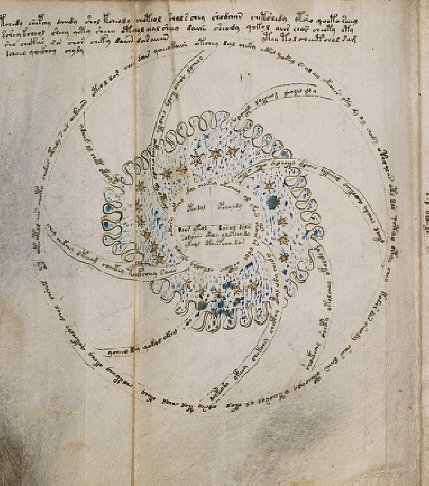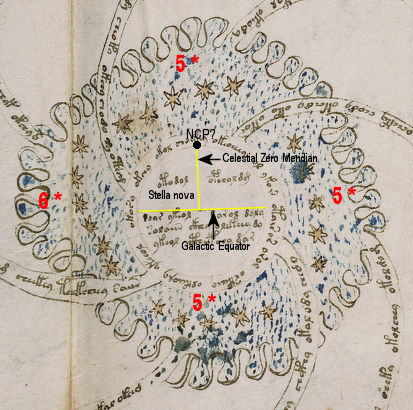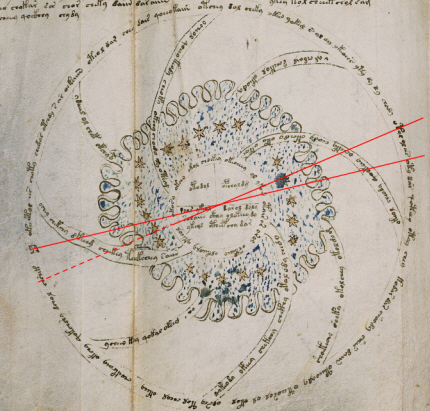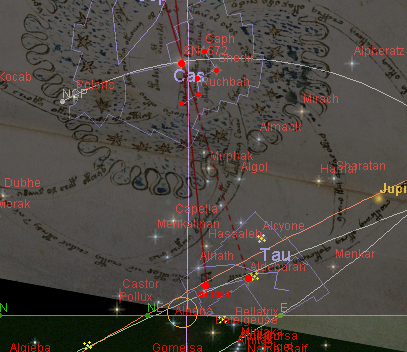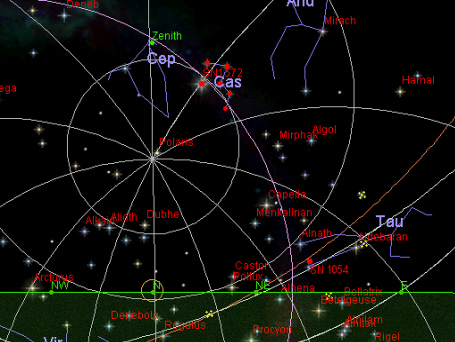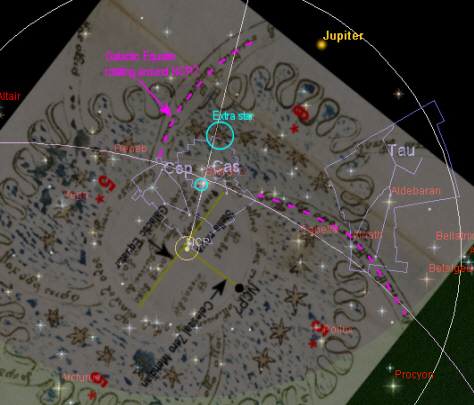|
|
| f68r, left, Voynich Manuscript. Credit: Beinecke Rare Book and Manuscript Library, Yale University. |
f68v left, on examination fits a description of SN 1572 best. As in f86r which I suggest refers to SN 1572, this folio also displays a T/O map and has the appearance of a north polar projection with the circle and curved arms but I suggest this means the map is a North Pole centred rather than the intersection of the T/O map being the NCP. The T/O map I suggest shows the Galactic Equator and Celestial Zero Meridian, defining it as SN 1572 rather than any other supernova. There are also markers on this folio and I suggest they mark the position of SN 1572 from the north and the Celestial Zero Meridian. Below are 2 images which show this and also note the number of stars in the sections increases from 5 to 6.
|
|
|
| f68r, left, cropped, Voynich Manuscript. Credit: Beinecke Rare Book and Manuscript Library, Yale University. Overlay by P. Han showing main points of interest and suggested interpretation of T/O map. | f68r, left, cropped, Voynich Manuscript. Credit: Beinecke Rare Book and Manuscript Library, Yale University. Overlay by P. Han showing folio markers. |
Below is an image showing the folio markers compared to a horizon based star map of the night Tycho first saw the new star for himself, 11/11/1572, from Scania (Denmark). The folio markers line up well with SN 1054 and Aldebaran. The 5 brightest stars of Cassiopeia and SN 1572 have been highlighted and in this context SN 1572 would be a sixth and brightest star here. The four sections with curves arms and 5 or 6 stars may represent the changing configuration of Cassiopeia as it rotated around the NCP and the arms marking the Galctic Equator or the celestial coordinate system (RA/Dec).
|
|
|
| Credit: Redshift6. Horizon based star map 11/11/1572 over Scania (formerly in Denmark). Overlay by P. Han highlighting SN 1572, SN 1054, Aldebaran and Cassiopeia/f68r, left, cropped, Voynich Manuscript. Credit: Beinecke Rare Book and Manuscript Library, Yale University. Overlay by P. Han showing main folio markers in relation to star map. | Credit: Redshift6. Horizon based star map 11/11/1572 over Scania (formerly in Denmark) showing celestial coordinate system. Overlay by P. Han highlighting SN 1572, SN 1054 and Cassiopeia. |
